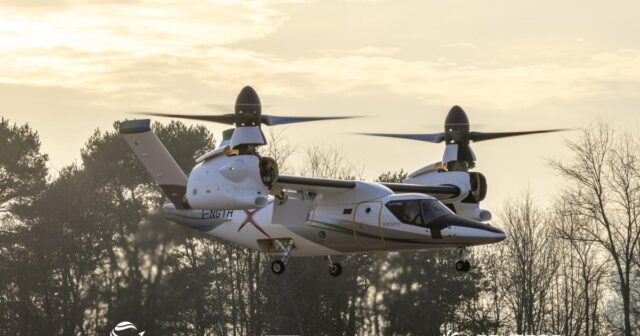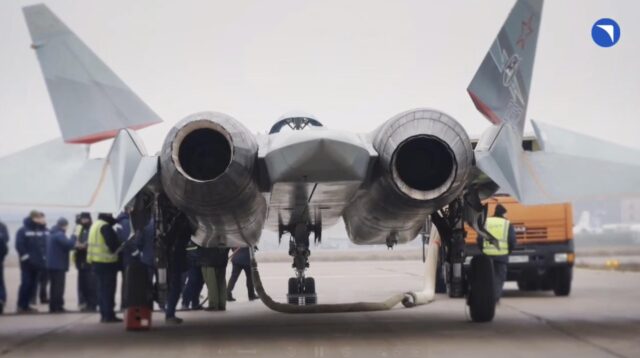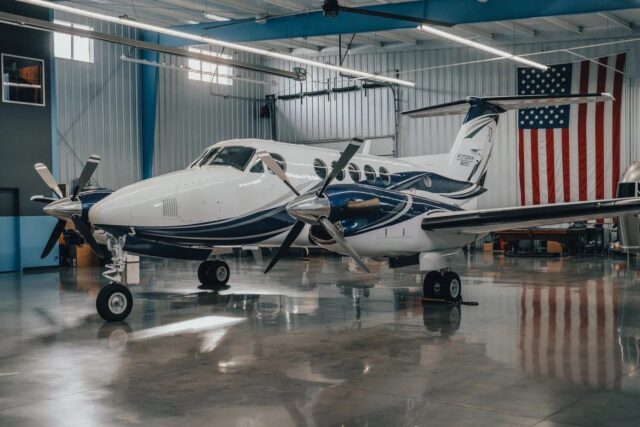Sold out for 2 years: How the Solar Impulse inspired the gamechanging Bristell B23 Energic electric plane

July 30, 2025

Swiss electric aviation pioneer H55 revealed in mid-July that it has already sold out the first two years of production capacity for its Bristell B23 Energic electric aircraft.
Much of that selling was done during a multi-stop US tour, visiting seven states so far, with one final stop in New York planned in early August. When Aerospace Global News spoke to Gregory Blatt, H55 Co-Founder & Mission Director, the team was in Palo Alto, conducting up to eight demonstration flights a day.
“Palo Alto is an important stopover for us,” Blatt tells AGN. “We’ve been here twice before with Solar Impulse, and it’s great to be back a third time.”

Gregory Blatt is no ordinary startup founder. Along with André Borschberg and Sebastien Demont, he was part of the Solar Impulse management team. That project culminated in a nonstop around-the-world flight that lasted 17 months, but it was always intended as a demonstrator, not a commercially viable proposition.
Having completed the Solar Impulse project, the team decided to take what they learned about electric propulsion and battery management and apply it to something that could revolutionise aviation.
Applying Solar Impulse data to commercial electric aviation
Having already flown five electric planes, H55 came to the electric aircraft market armed with decades of data. But with all the experience of over 30,000 miles of Solar Impulse flights, the founders decided they were not going to build any more planes.
“What really made us successful is the propulsion system that allowed us to fly,” Blatt notes. “With Solar Impulse, a short flight was a day, a longer one would be five days, and we did all that with zero issues.”
Adding to this was the team’s extensive knowledge of battery management; not just how to get the most out of them, but also how to keep them safe.

Founded in 2017, H55’s unique Electric Propulsion System (EPS) took flight just two years later, integrated into the modern general aviation trainer platform, the Bristell B23.
As a piston-powered aircraft, the B23 is a popular new entrant. Entering the market in 2021, 100 aircraft were built and delivered in the first 30 months. With its docile handling, familiar avionics and CS-23/Part 23 certification, it’s proving popular with flight schools and private pilots looking for a high-end light GA aircraft.
It’s a fantastic choice for the demonstration of H55’s EPS in a real-world setting, and lets the company focus on certification of the system independently, rather than having it tied to an aircraft that also requires certification.
The road to certification of H55’s Electric Propulsion System
H55 is committed to delivering the EPS ready-certified and expects to have the process complete with EASA by early to mid-2026. FAA certification is perhaps a little further out, but the company remains in close dialogue with the regulatory authorities.
Certifying the EPS independently removes the burden from aircraft manufacturers to recertify the system when integrating it onto an airframe.
“We will be the first company to have a standalone electric propulsion system certified,” Blatt says. “Offering the client a certified system will make his or her life easier, faster and cheaper.”

Crucial to this certification is proving the thermal management of the battery system, something that H55 is a step ahead with.
“We could surround the battery with a metal box to keep it from burning,” Blatt says, “but that’s going to add weight, and that would kill the endurance.”
While many electric aircraft developers are counting on cooling plates, sensors and liquids to manage battery temperatures, H55’s proprietary thermal management system focuses on prevention rather than removal of heat. Smart materials and passive phase-change systems to absorb thermal spikes before they occur.
“Because of Solar Impulse, we understood about optimisation, and optimisation is about using smart materials; phase changing materials,” Blatt explains. “That way, you get the lightness without compromising on safety and security.”

Testing such technology in Switzerland’s cool Alpine climate is fine, but H55 needed to prove the technology in hot places too. Typically, battery performance will degrade if it becomes hot, and the risk of thermal runaway is elevated. But this summer, in 40°C-plus heat, the Bristell B23 Energic had no problems.
“We’ve operated in high temperature environments in Arizona and Nevada, and we’ve seen that there’s no impact on performance, and no impact on the batteries,” Blatt tells AGN. “We’ve checked all the boxes around thermal management, and we’re very close to our certification on this system.”
The Bristell B23 Energic is an exciting proposition for general aviation and flight training
Integrating the H55 EPS into a modern, comfortable general aviation platform has made the Bristell B23 Energic quite the proposition. During the US tour, it averaged around eight flights per day, with more than 160 pilots getting behind the controls, from military aviators to private instructors.
“The aeroplane has exceeded all expectations in its performance,” says Blatt. “The plane flies spectacularly well, and the feedback has been incredibly positive.”

One of the standout features of the B23 Energic is its quietness. Blatt notes that although you hear the hum of the propeller, the onboard experience is remarkably quiet, so much so that pilots and passengers can remove their headsets and have a conversation.
“They love the quietness, they love the responsiveness of the airplane,” says Blatt. “But more than that, people love the fact that they’re not wasting fuel on lineup and taxi. When you stop, the engine stops.”
A key market for the B23 Energic is flight schools, and its US tour has generated a positive response in this area. Blatt describes flight schools as being very excited about the proposition, but as well as the management, he says this excitement is also coming from the students.
“The students are young, and they tend to have a sustainability focus,” he says. “But they also like the airplane because it’s a sexy, modern-looking airplane compared to some of the older models that they fly.”

For flight school management, the Bristell’s low cost of operation and minimal maintenance requirements make it an ideal choice. Operating a B23 Energic costs flight training schools just $5 to $7 per flight hour in electricity, a fraction of the $50 to $100 for traditional trainers.
Its lithium-ion battery packs are rated for around 1,500 cycles, and when it does come time to replace, there’s the possibility of an upgrade. As battery technology improves, operators will have the opportunity to increase the longevity and capacity with a simple modular replacement.
Scaling up: From two seat trainer to regional hybrid
Beyond its flagship trainer, H55 is working with CAE and Piper to electrify training fleets and offer STCs to broader operators. Other projects include Harbour Air’s electric Beaver floatplanes and a hybrid-electric Dash 8 with Pratt & Whitney and De Havilland Canada.
“One project that I’m very excited about is the project we’re doing with Pratt Whitney and De Havilland in Canada, which is a 49-seat Dash 8, which is a hybrid-electric.”

In this collaboration, H55 is supplying the 200 kWh battery system for a hybrid-electric demonstrator based on the De Havilland Dash 8. The project, led by Pratt & Whitney Canada, aims to reduce fuel burn and emissions by up to 30% using a parallel hybrid-electric propulsion system combining a 1 MW electric motor with a traditional turboprop engine. Ground testing began in 2025, with flight tests expected to follow.
This marks H55’s first foray into regional-scale aircraft and demonstrates the scalability of its propulsion technology. It also strengthens its role as a strategic partner for OEMs seeking certifiable, modular battery solutions for commercial and hybrid-electric platforms.
















